黑龙江省佳木斯市重点中学2021-2022学年高一上学期期末考试英语试题(扫描版含答案,无听力音频,有文字材料)
文档属性
| 名称 | 黑龙江省佳木斯市重点中学2021-2022学年高一上学期期末考试英语试题(扫描版含答案,无听力音频,有文字材料) | 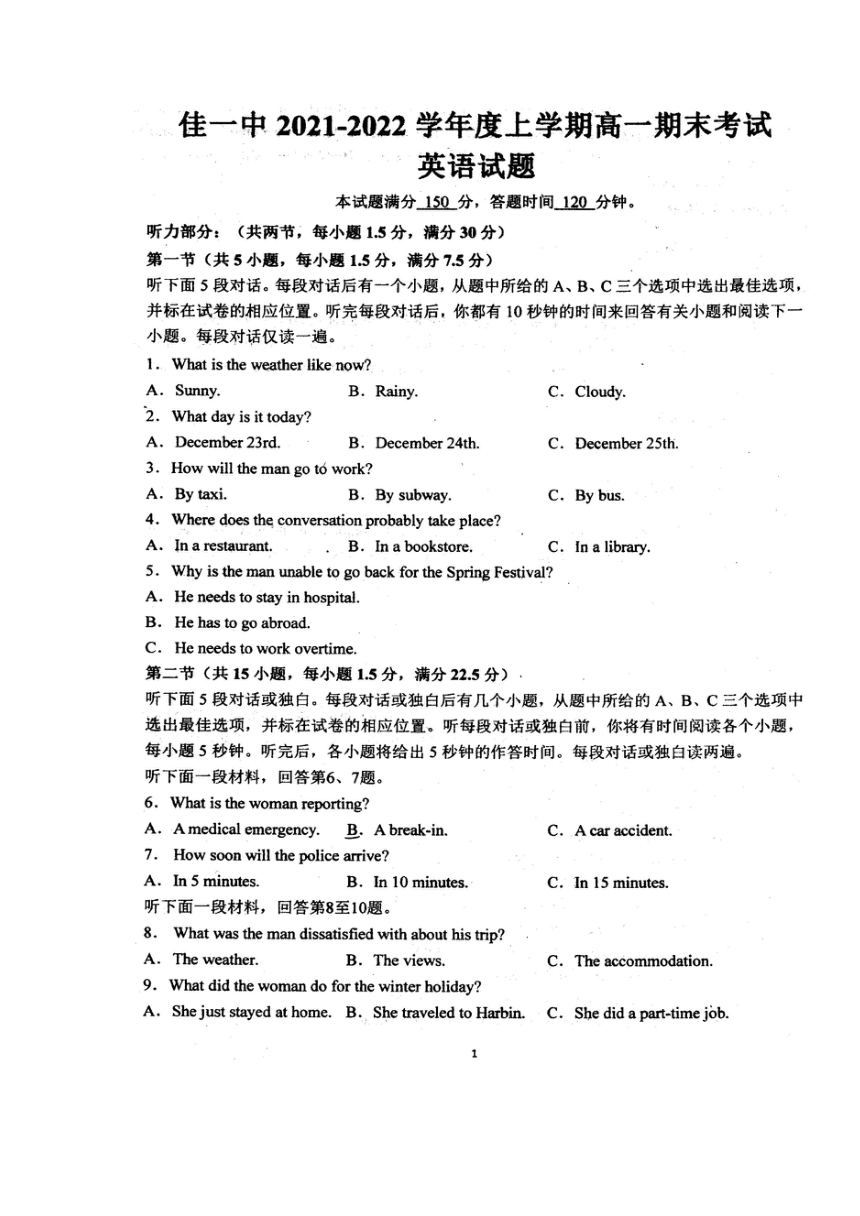 | |
| 格式 | docx | ||
| 文件大小 | 15.1MB | ||
| 资源类型 | 教案 | ||
| 版本资源 | 外研版 | ||
| 科目 | 英语 | ||
| 更新时间 | 2022-01-10 18:47:50 | ||
图片预览

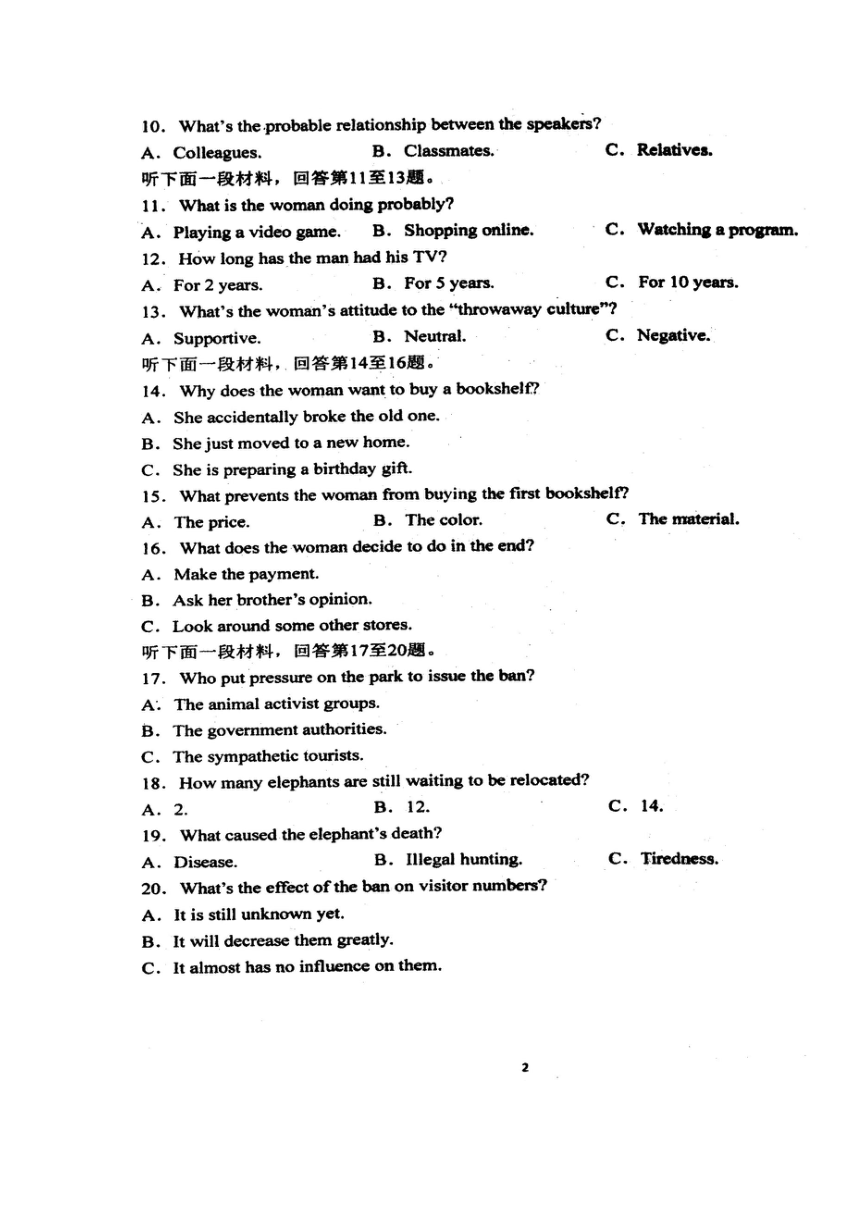
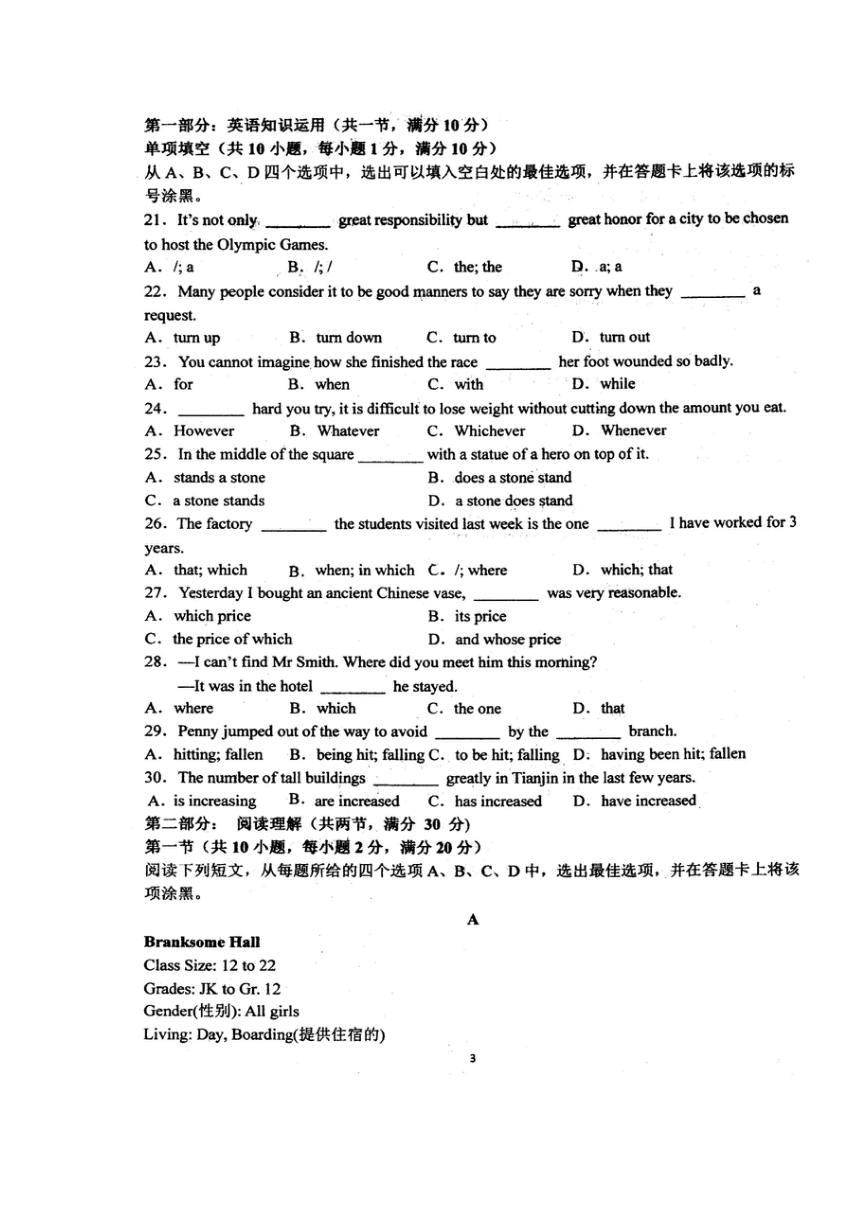
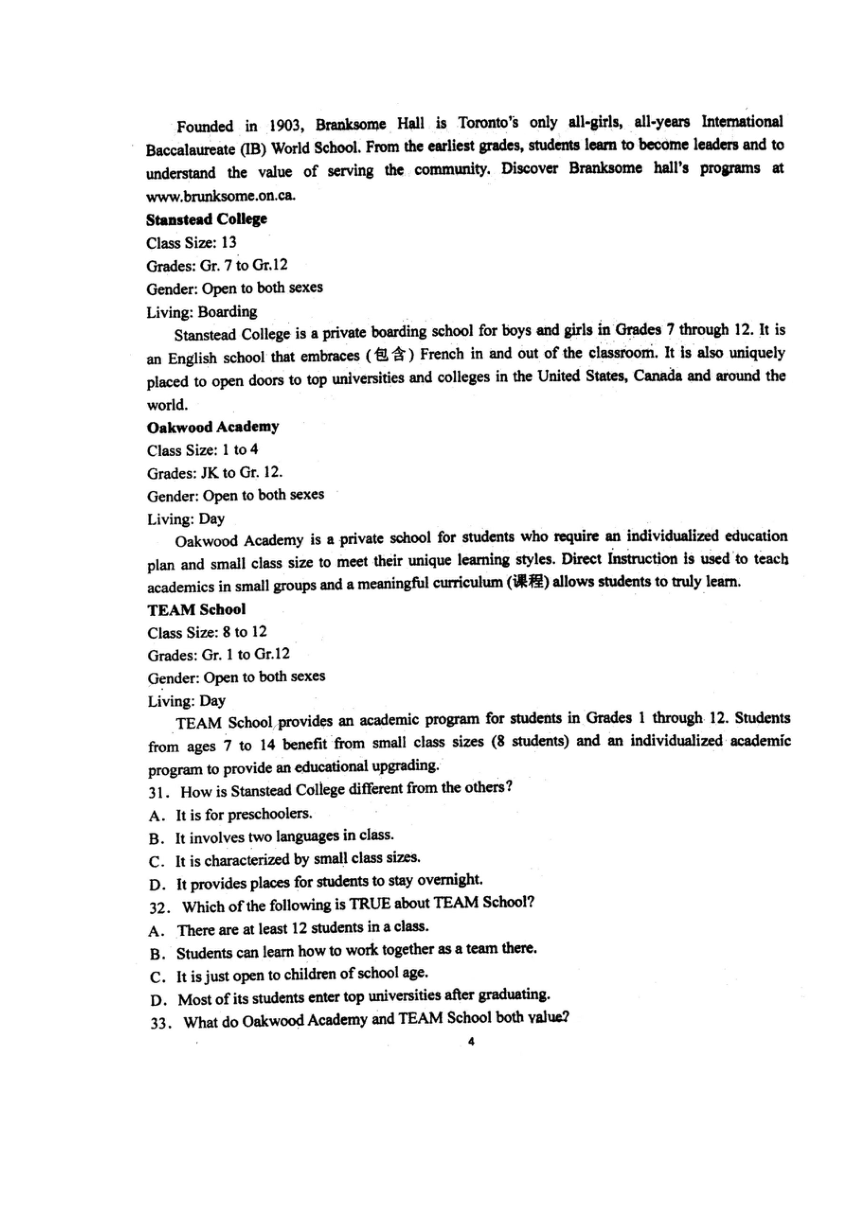
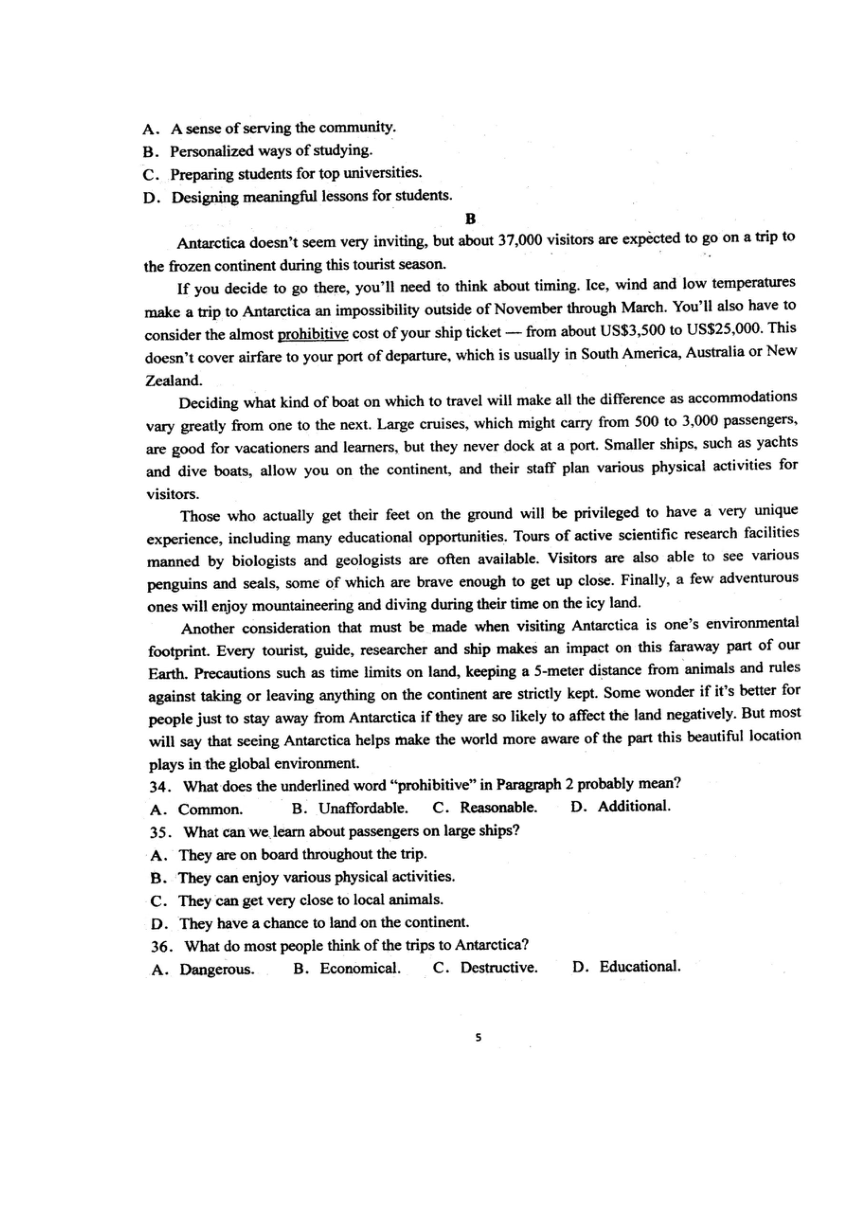
文档简介
Art and science may seem like opposite things. One means the creative flow of ideas, and the
other means cold, hard data-some people believe. In fact, the two have much in common. Now, a
study finds art can help students remember better what they learned in science class
Mariale Hardiman, an education specialist at Johns Hopkins University, noticed that students
who used art in the classroom listened more carefully. They might ask more questions. They might
volunteer more ideas. What's more, students seemed to remember more of what they had been
taught when their science lessons had involved
(涉及)at. To prove that, Hardiman teamed up with
some researchers and six local schools.
In the experiment, the researchers worked with teachers in 16 fifth-grade classrooms. They
provided traditional science lessons and art-focused ones. In a traditional science class, for example,
students might read aloud from a book. In the art-focused one, they might sing the information
instead
The team randomly assigned(随机分配) each of the30 students to either a traditional science
classroom or an art-focused one. Students then learned science using that way for the whole
unit--about three weeks. When they changed to a new topic, they also changed to the other type of
class. This way each student had both an art-focused class and a traditional one. Every unit was
taught in both ways, to different groups of students. This enabled the researchers to see how
students did in both types of classes
The team found that students who started off in traditional classes performed better after they
moved into an art-focused class. But those who started in an art-focused class did well even when
they went back to a traditional science class. These students appeared to use some of the art
techniques(#ry)after going back to a traditional class. Classroom teachers reported that many
students continued to sing the songs that they learned after finishing the unit. " The more we hear
something, the more we retain it, "Hardiman says. It suggests that the arts may help students apply
creative ways of learning on their own.
37. Why did Mariale Hardiman do the study
A. To prove the importance of art at school
B. To know how to encourage students to ask questions.
C. To find a way to help her students lean better
D. To see if art might improve science learning
38. What were the students required to do in the experiment
A. Learn three units in total
B. Take two types of classes
C. Learn two topics for three weeks. D. Choose what theyd like to learn
39. What does the underlined word"retain"in the last paragraph mean
A. Memorize.
B. Express
C. Improve
D. Finish
40. What is the text mainly about
A. Art helps students develop creativity.
B. Art-focused classes interest students a lot
C. Art can make science easier to remember.
D. Art has something in common with science.
other means cold, hard data-some people believe. In fact, the two have much in common. Now, a
study finds art can help students remember better what they learned in science class
Mariale Hardiman, an education specialist at Johns Hopkins University, noticed that students
who used art in the classroom listened more carefully. They might ask more questions. They might
volunteer more ideas. What's more, students seemed to remember more of what they had been
taught when their science lessons had involved
(涉及)at. To prove that, Hardiman teamed up with
some researchers and six local schools.
In the experiment, the researchers worked with teachers in 16 fifth-grade classrooms. They
provided traditional science lessons and art-focused ones. In a traditional science class, for example,
students might read aloud from a book. In the art-focused one, they might sing the information
instead
The team randomly assigned(随机分配) each of the30 students to either a traditional science
classroom or an art-focused one. Students then learned science using that way for the whole
unit--about three weeks. When they changed to a new topic, they also changed to the other type of
class. This way each student had both an art-focused class and a traditional one. Every unit was
taught in both ways, to different groups of students. This enabled the researchers to see how
students did in both types of classes
The team found that students who started off in traditional classes performed better after they
moved into an art-focused class. But those who started in an art-focused class did well even when
they went back to a traditional science class. These students appeared to use some of the art
techniques(#ry)after going back to a traditional class. Classroom teachers reported that many
students continued to sing the songs that they learned after finishing the unit. " The more we hear
something, the more we retain it, "Hardiman says. It suggests that the arts may help students apply
creative ways of learning on their own.
37. Why did Mariale Hardiman do the study
A. To prove the importance of art at school
B. To know how to encourage students to ask questions.
C. To find a way to help her students lean better
D. To see if art might improve science learning
38. What were the students required to do in the experiment
A. Learn three units in total
B. Take two types of classes
C. Learn two topics for three weeks. D. Choose what theyd like to learn
39. What does the underlined word"retain"in the last paragraph mean
A. Memorize.
B. Express
C. Improve
D. Finish
40. What is the text mainly about
A. Art helps students develop creativity.
B. Art-focused classes interest students a lot
C. Art can make science easier to remember.
D. Art has something in common with science.
同课章节目录
